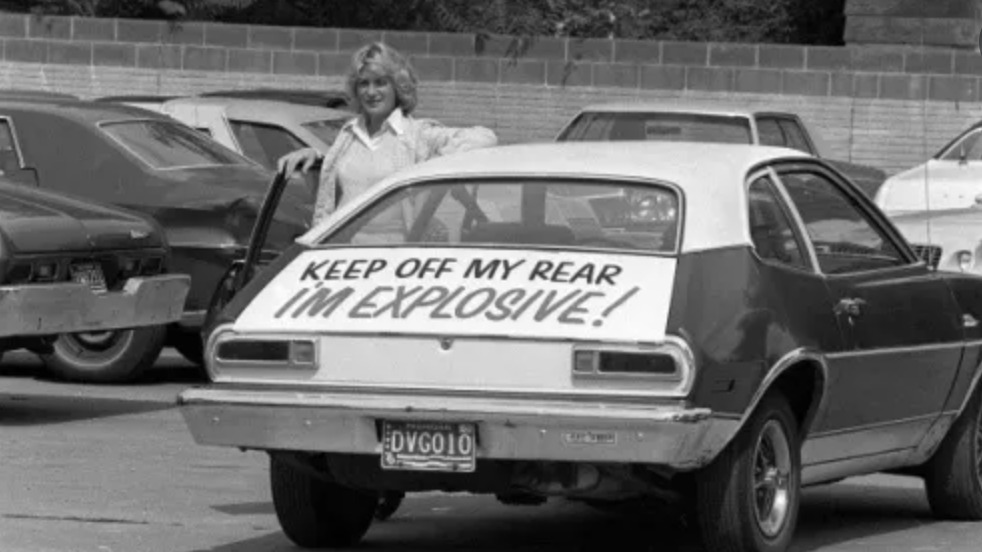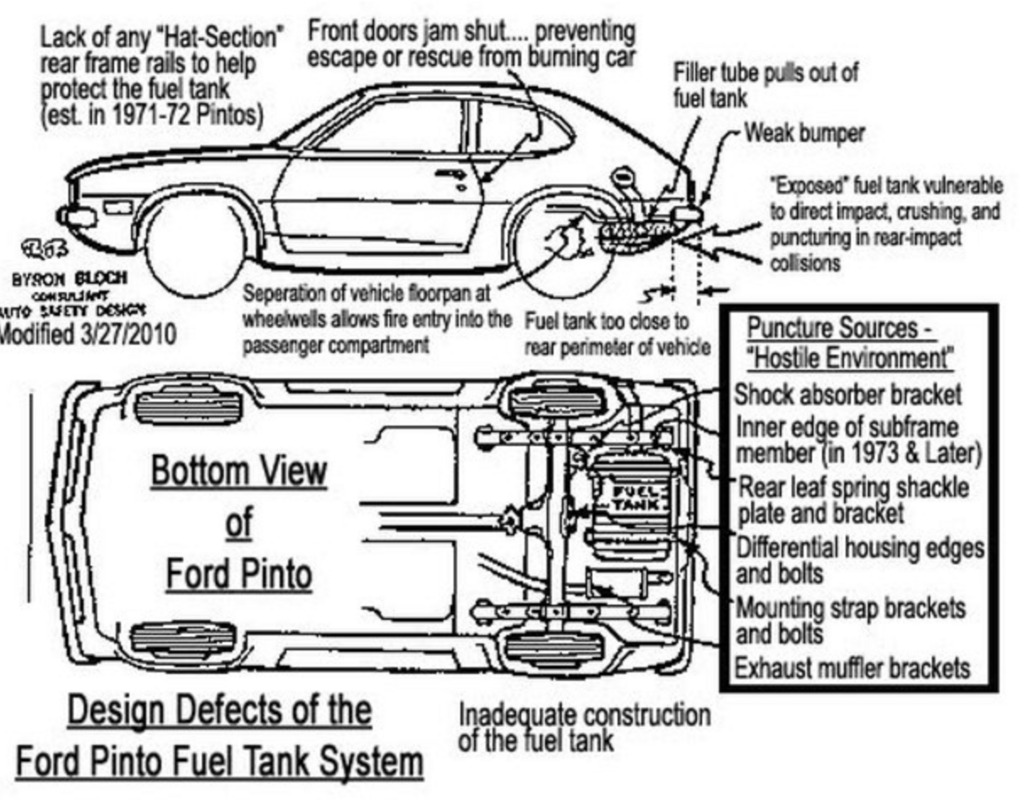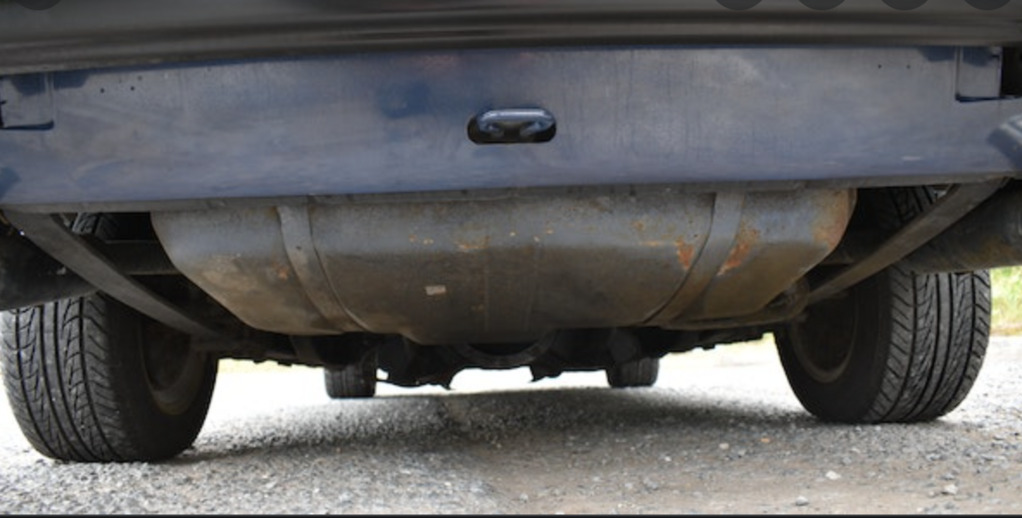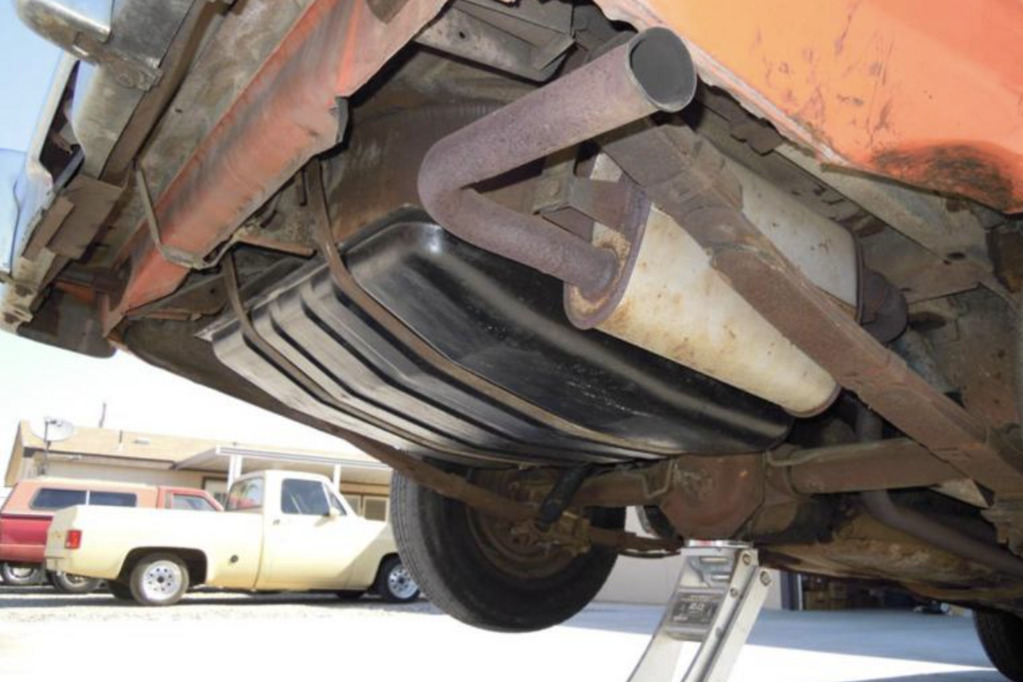cjhillman
Posted a lot
   1979 Capri (Rolling Project) 1985 Escort mk3 (Daily)
1979 Capri (Rolling Project) 1985 Escort mk3 (Daily)
Posts: 1,619
|
|
|
|
I was listening to a Podcast the other day about the Ford Pinto (Car not engine) and how the rear end crashes resulted it bursting into flames. I forgot that it was the petrol tank hitting the rear axle that ruptured it and caused the explosion. It got me thinking how this was different than my Capri? I googled it and didn't find anyone saying their Capri had exploded  I'm guessing most 60s/70s RWD cars are in this configuration but why was it so bad with the Pinto? From what I can see its all the same stuff (Spring Hangers, Axle, Exhaust) that caused the explosions. I thought if anyone would know they would be on here. Maybe its that most Capri's crashed into something rather than being crashed into    Capri Petrol Tank for comparison .  Pinto Petrol Tank  |
| |
|
|
|
|
|
|
|
|
|
|
Likewise the setup on my MK2 cortinas is the same, but I'm 13 cars in, and have yet to have one explode on me!
I'd be interested in the reasoning too
I suppose the main difference is that the cortina tank mounts to the bootfloor, not strapped in?
|
| |
|
|
Ryannn
Posted a lot
  
Posts: 2,421
|
|
|
|
|
Not Ford related but…
Jeep ZJ Grand Cherokee’s have a plastic fuel tank which would also explode in a rear end accident. Chrysler’s answer was a recall and the fitting of a towbar!
So everyone got a nice dealer approved tow bar for free haha.
|
| |
|
|
dapser
Part of things
 
Posts: 222 
|
|
|
|
|
There was a gentleman in the USA during the 1970's who had a lot to do with American vehicle legislation (allegedly) and it might be worth a little background reading about Ralph Nader.
Just googled him and he's still with us at 88 years of age.
Those of us of a certain age automatically recall his name whenever anyone mentions the Ford Pinto.
The whole back story to growing car safety legislation in the USA, and what it led to today (a majority of bland and bloated car designs), is interesting if car design and history is your thing.
I'll get off my soapbox now.
dapser
|
| |
|
|
ChasR
RR Helper
motivation
Posts: 10,307
Club RR Member Number: 170
|
|
|
|
|
I don’t think Nader played as big a part with the Pinto TBH. The Corvair yes. Another thing to remember is that tyre technology has come a very long way from back then, and most Corvairs are now on later suspension setups, which all add up to a different car to drive to the cars available back then.
The Pinto was a well known issue, where Ford knew it would
Be cheaper to pay the fine, and have folks injured or worse. The reason for why it was more of an issue in the US I will say is probably down to the following two reasons, most likely the top two issues.
-Higher ambient temperatures
-Larger cars/trucks owned by everyone in comparison, thus likely more weight to add into the impact.
-Possibly other issues. Maybe brake lines weren’t routed safely: brake fluid was very flammable back then, and maybe that didn’t help matters (ie, the brake fluid lit up off the exhaust which then with a ruptured fuel tank, caused that to ignite?).
|
| |
Last Edit: Oct 4, 2022 8:13:04 GMT by ChasR
|
|
dazee
Part of things
 
Posts: 96
|
|
|
|
|
I had a Mk2 Cortina that got rear-ended and although it did not explode, the tank split and dumped most of the fuel onto the road. Current rolling project '66 Mustang Coupe, has a similar tank arrangement and there are some 'tank protectors on the USA market but whether they are effective or not I can't say. I added some small protection against fire risk by adding a steel backing to the rear seat to create a firewall.
|
| |
|
|
|
|
|
|
|
|
The BIG issue with the Pinto was not that it caught fire so easily after a rear end impact, but that Ford KNEW it would and coldly weighed up the cost of settling with relatives of the deceased vs retooling the car to make it safer. The accountants and legal teams at Ford reckoned it'd be cheaper in the long run to settle! The DISCLOSURE of that information is what caused all the outrage by the buying public, not the design deficiencies, the Pinto was little, if any, less safe than any other US compact of the time.
I too have owned dozens of Fords over the years, many not only had similar tank placement, but had the filler at the extreme rear behind the number plate! I only had one badly rear ended, a 64 MkIII Zephyr 6 which was written off by a 3.5 ton truck to the back bumper. It shortened the car by over 2ft, but it didn't burn!
Steve
|
| |
|
|
|
|
79cord
Posted a lot
  
Posts: 2,617
|
|
|
|
|
Yep, there were many cars that may have been worse, with early Cortinas notably having a rear-mounted filler & fuel-tank top serving as boot-floor. But but had a much smaller presence in the US in a slightly less safety-conscious era.
2-ton cars driving in to them on American freeways can't have helped, nor the Pinto's relatively new (to Americans) hatchback bodystyle, and early versions being released shortly before the federal 'big-bumper' regulations.
|
| |
|
|
|
|
|
|
|
|
I think the Pinto thing has been somewhat over rated. I know a guy who worked for Ford in the US back then and its not as clear a story as the internet would have you believe.
Remember, the official number of fatalities from the fires in Pintos was 27. Which is a tragedy for maybe 27 families out there, I won't down play that, but how many people died in fires with other makes and models of cars? I remember reading one Police union wanting to boycott the Ford CROWN Victoria because of fires caused in rear end impacts...
|
| |
1941 Wolseley Not Rod - 1956 Humber Hawk - 1957 Daimler Conquest - 1966 Buick LeSabre - 1968 Plymouth Sport Fury - 1968 Ford Galaxie - 1969 Ford Country Squire - 1969 Mercury Marquis - 1970 Morris Minor - 1970 Buick Skylark - 1970 Ford Galaxie - 1971 Ford Galaxie - 1976 Continental Mark IV - 1976 Ford Capri - 1994 Ford Fiesta
|
|





















